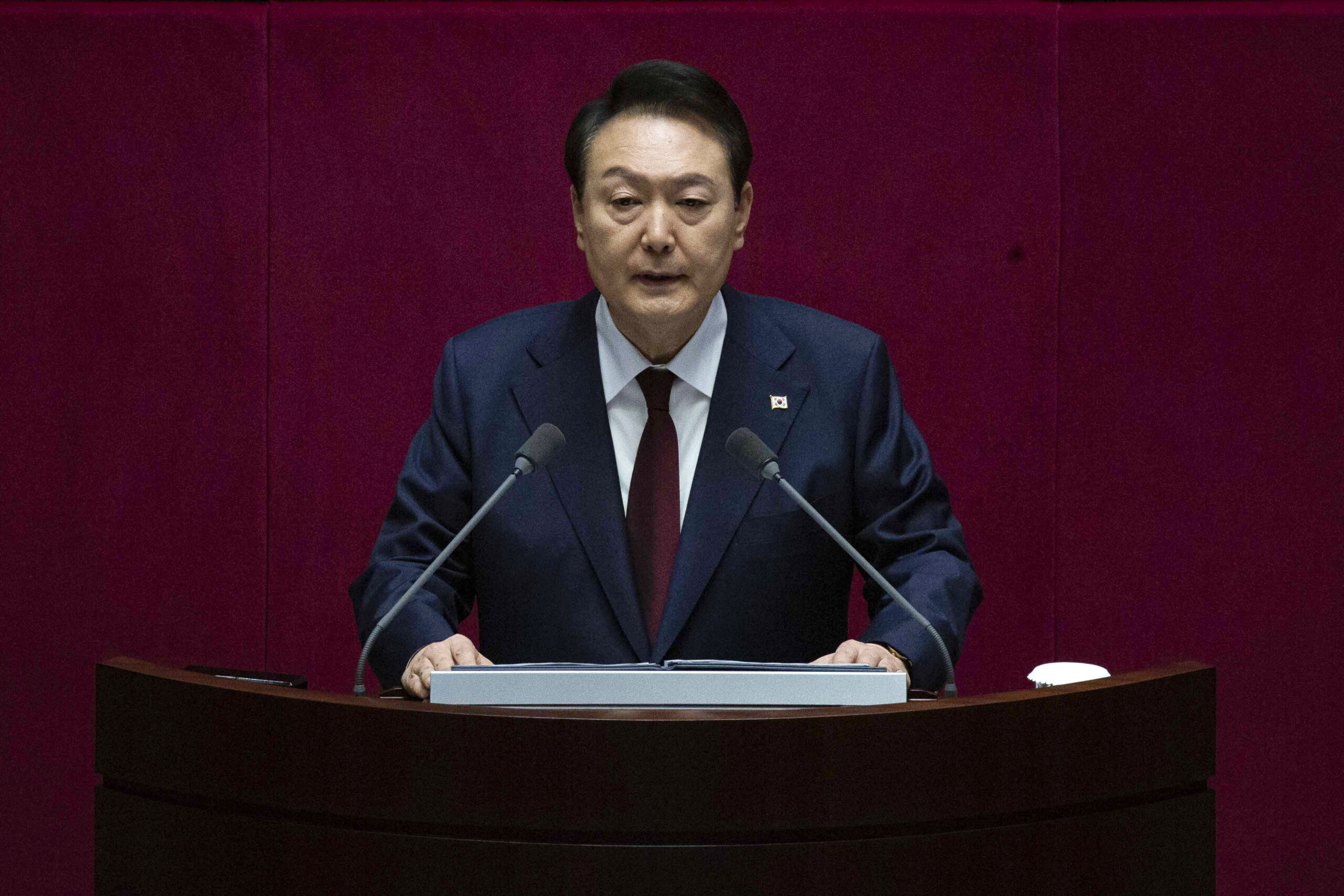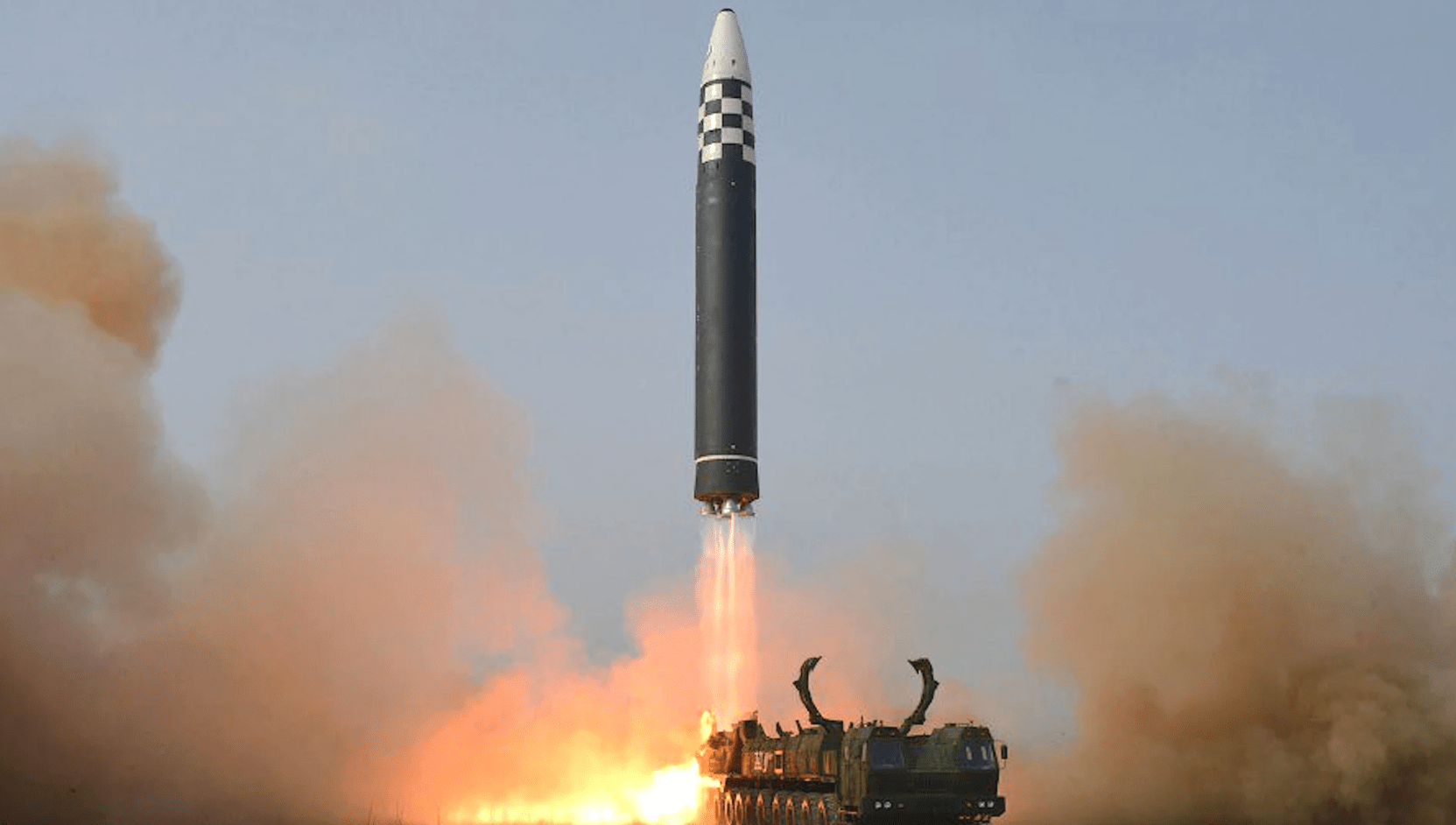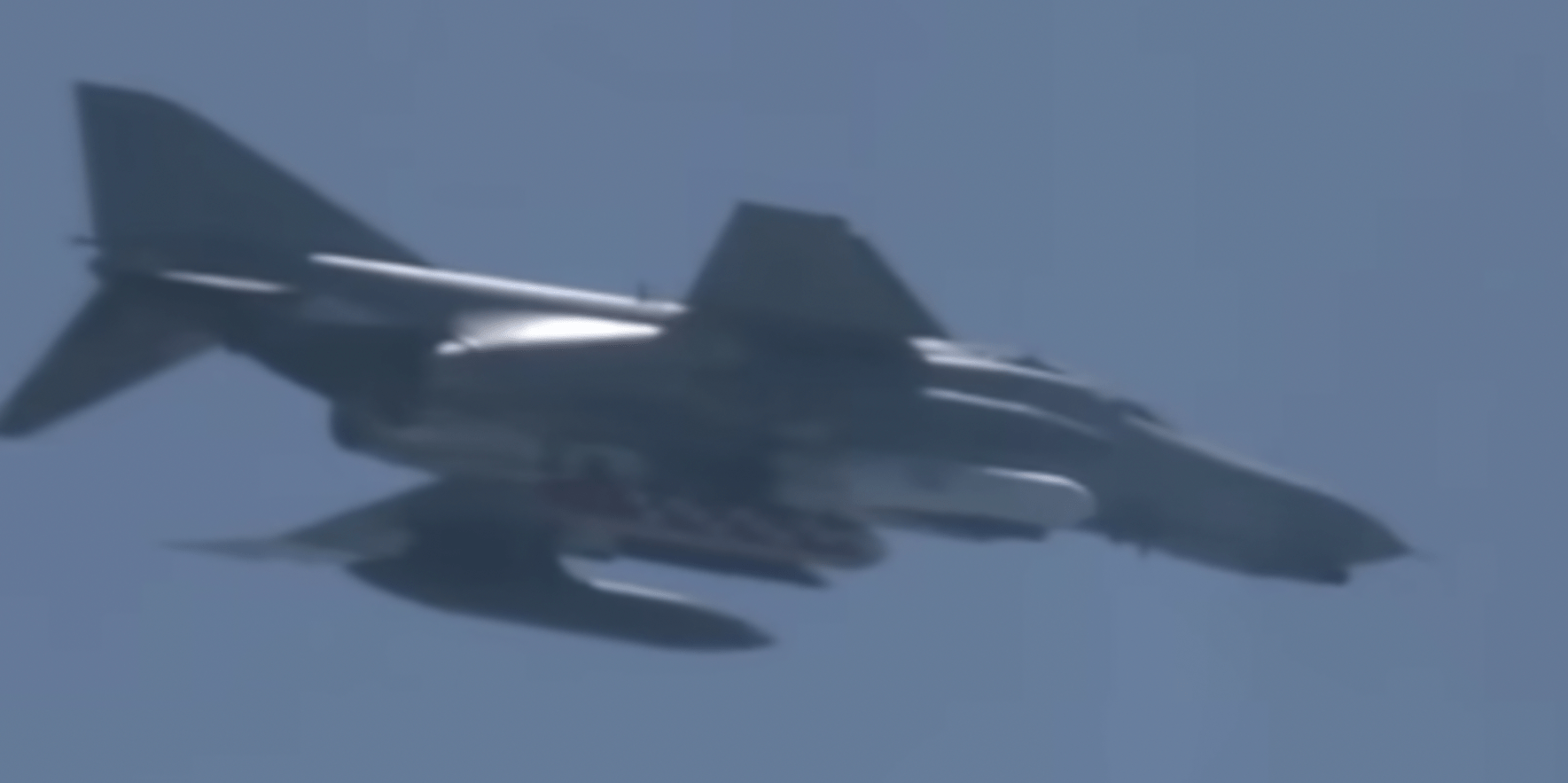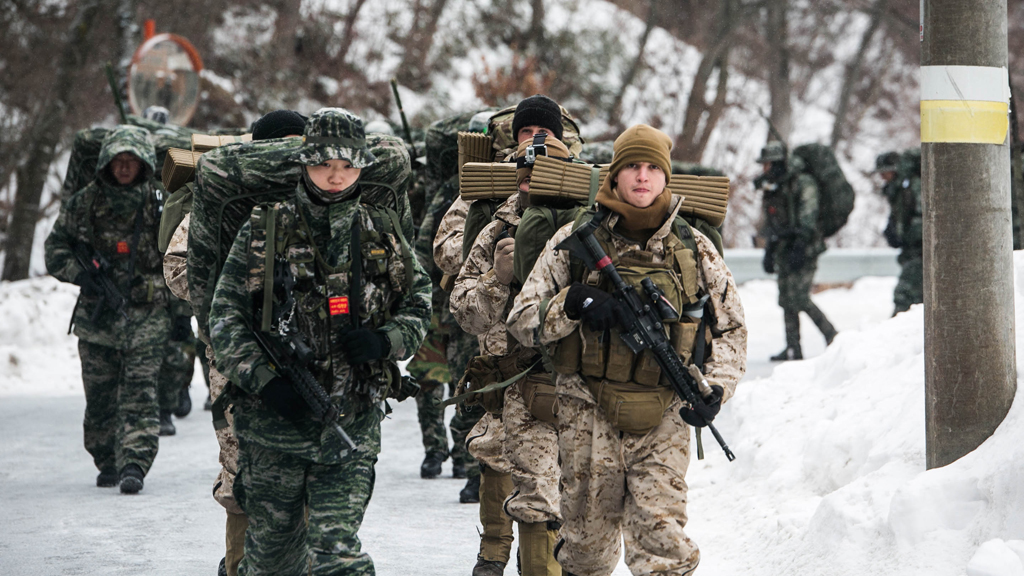South Korea’s president has said that his country might build nuclear weapons in response to the continuing buildup of similar weapons in North Korea. This is the most explicit announcement so far from Seoul that it’s actively considering nuclear weapons, although the disclosure is also very likely calculated to pressure the United States into giving Seoul a role in nuclear war planning on the peninsula, and perhaps also to redeploy U.S. tactical nuclear weapons to South Korea, the last of these having being withdrawn in 1991.
Indeed, this is apparently the first time since 1991 that a South Korean president has actually brought up the idea of fielding homegrown nuclear weapons.

The potentially seismic change in South Korean defense policy was signaled by President Yoon Suk Yeol yesterday, during a joint policy briefing by the defense and foreign ministries. Pointing explicitly to North Korea’s rapid developments in nuclear warheads and delivery systems, Yoon noted:
“It’s possible that the problem gets worse, and our country will introduce tactical nuclear weapons or build them on our own. If that’s the case, we can have our own nuclear weapons pretty quickly, given our scientific and technological capabilities.”
Yoon also made it clear that Pyongyang’s expanding nuclear arsenal is a threat not only to the South but also to the United States and other allies. “The North Korean nuclear threat is not only a threat to South Korea anymore, or an issue of the United States merely protecting South Korea. It has become a so-called common interest for South Korea, Japan, and the United States,” he said.

Another option that Yoon outlined would be to request that the United States redeploy tactical nuclear weapons to the South. “It’s always important to choose a realistically possible means,” the South Korean president added, seemingly in reference to an increased level of deterrence — nuclear and conventional — provided by Washington.
At this stage, there is no formal policy regarding building nuclear weapons in South Korea. Instead, the immediate concern, Yoon said, is to strengthen the country’s military alliance with the United States.
This is a topic that has been at the forefront of South Korean defense issues since the Yoon government came to power in May of last year, bringing with it a commitment to bolstering the country’s military capabilities.

For Seoul, that strengthening would likely have to include a rethinking of the U.S. protective nuclear ‘umbrella’ over South Korea, including where the weapons in question are actually based, and the degree to which South Korea would be able to influence their deployment.
While attempting to get Washington to rethink the role of nuclear weapons in the defense of South Korea is one thing, the prospect of Seoul actually building and fielding its own nuclear weapons is potentially far more significant — and challenging.
After all, as a signatory of the Nuclear Nonproliferation Treaty, or NPT, South Korea is currently prohibited from developing nuclear weapons. Under a separate joint declaration with North Korea dating from 1991, Seoul and Pyongyang agreed not to “test, manufacture, produce, receive, possess, store, deploy or use nuclear weapons.”

However, the fact that North Korea has broken that agreement, with six nuclear tests since 2006, means that a precedent has at least been set on the peninsula and Seoul may seek to follow suit, especially after the abject failure of negotiations to stop or even significantly slow down Pyongyang’s nuclear weapons program.
On the contrary, the latest announcements from North Korea indicate that the country is seeking to further expand its nuclear arsenal, which is clearly aimed at the South, both literally and metaphorically.
North Korean leader Kim Jong Un recently called for an “exponential increase” in the production of nuclear warheads and said the country would build a more powerful intercontinental ballistic missile (ICBM). At the same time, he reiterated the fact that South Korea is the “undoubted enemy.”

Together with this, North Korea dramatically scaled up its missile tests in 2022, reaching a record number, with more than 70 in all, including the first ICBM launch in half a decade and the first launch of a ballistic missile across the de-facto maritime border with the South. Such tests have continued into the new year, while last month also saw the first drone incursions into the South in five years.
Put together, it means there’s plenty of ammunition for more hawkish members of Yoon’s ruling party to call for a reassessment of the position on nuclear weapons. At the same time, surveys seem to show that a majority of the South Korean people would support either the United States redeploying nuclear weapons to the South or the building of a domestically produced nuclear arsenal.
Critically, the call for homegrown nuclear weapons suggests that there is an overall lack of confidence in the U.S. nuclear umbrella, as it currently stands. As well as the removal of U.S. tactical nuclear weapons from the peninsula as part of post-Cold War arms reductions, the fact that the nuclear capabilities in the North have been growing at an alarming rate suggests that the deterrence value of the umbrella is somewhat limited. Added to these factors is the potential for the U.S. political landscape to change dramatically every four years, leaving Seoul working alongside an ally that may have overhauled its defense and foreign policies.
There is also the fact that the U.S. military has also begun to reassess the realities of a possible nuclear conflict on the peninsula. In its 2022 Nuclear Posture Review, for example, the Pentagon describes the “deterrence dilemmas” presented by North Korea while highlighting the risk of a wider Asia-Pacific conflict if nuclear weapons were to be used. These kinds of problems have become significantly more acute since the North has developed ICBMs capable of reaching the contiguous United States. Key U.S. military facilities in the wider region could also become targets for shorter-ranged nuclear-armed North Korean missiles.

In fact, South Korea has looked at establishing its own nuclear arsenal in the past, with related work under the military dictator Park Chung-hee in the 1970s. Washington managed to put a stop to this covert weapons program, including by providing the insurance of the nuclear umbrella.
South Korea is already among the world’s leading nuclear energy producers and this, coupled with the notably high levels of technology available within its defense industries suggests that nuclear weapons would be within reach, although this would still be a time-consuming and — above all — extremely expensive undertaking.
However, were nuclear warheads to become available, South Korea has a number of potentially suitable delivery platforms either fielded or under development. These include air-launched cruise missiles, a so-called “high-power” ballistic missile able to carry a heavier warhead than previous weapons, and a submarine-launched ballistic missile (SLBM). The SLBM, in particular, has attracted speculation that it could be adapted for nuclear delivery since a conventionally armed missile in this class is a distinct anomaly. The SLBM also offers the kind of second-strike capability that would allow Seoul to strike back in kind even after a nuclear attack from the North. This in itself, is of significant deterrent value.

If Seoul were to adapt, say, its SLBM to carry a nuclear warhead, the hawks’ logic would argue that the question of whether the United States is really willing to offer the full protection of its nuclear umbrella would go away. Furthermore, the same argument goes, the United States would become safer, since the South could fight a war with the North without the U.S. military needing to ‘go nuclear,’ thereby reducing the likelihood of a nuclear attack by the North against U.S. territory or bases outside Korea. On the other hand, regardless if the conflict was nuclear or conventional, U.S. military installations within South Korea would be close to the top of the target lists in any kind of large-scale offensive by the North.
An official South Korean Ministry of Defense video from September 2021 showing a new “high-power” ballistic missile, a new supersonic anti-ship cruise missile, the new air-launched long-range cruise missile, as well as the previously announced SLBM:

It should be recalled, as well, that, in times of war on the peninsula, South Korea still wouldn’t actually have control of its own military. Fielding nuclear weapons, to which Seoul would hold the launch codes and target coordinates, would seem to be a singularly dramatic way of sidestepping this reality.
In the best-case scenario, a South Korean nuclear arsenal could perhaps encourage the North to scale back its own nuclear weapons program, although this seems highly questionable, given the current tit-for-tat weapons developments on the peninsula. A more realistic scenario could see China, or other Asia Pacific powers, putting pressure on the North, although any such measures are likely to equally affect a nuclear-armed South Korea, too.
In the worst-case scenario, however, nuclear weapons would simply continue to proliferate in the region, with a new and even more lethal arms race between North and South, as well as other Asia Pacific powers potentially developing nuclear weapons of their own or expanding their existing arsenals.
Coupled with that is the fear that the risk of a war breaking out between North and South will only be increased. Already, tensions are running high with a non-nuclear South Korea. It’s highly likely that the risk of miscalculation or human error would only increase with nuclear weapons in the hands of both Koreas, especially with Kim Jong Un already paranoid about his survival and the extent of the South’s war plans that target him and his regime with a potential first strike. With that in mind, it’s likely, too, that Seoul developing nuclear weapons would play squarely into the North’s propaganda war and be used to fuel yet more animosity against the South and its allies.

Perhaps Yoon’s talk of potential nuclear plans is after all, more about gaining concessions from the United States. If Washington were willing to meet Yoon’s demands for a more robust defensive umbrella, that would likely play out better in the long run. There would be no need to withdraw from the NPT and risk international sanctions, money could be channeled instead into conventional weapons, and the risk of a new nuclear arms race would be mitigated.
However, it’s by no means clear how receptive the United States will be to this rhetoric, with the redeployment of U.S. nuclear weapons to the South seemingly an unlikely prospect, after 32 years, with a public commitment to making the peninsula nuclear-weapons-free.
There has been some traction already, with the announcement that South Korea will be involved in tabletop exercises that will examine how its military would work together with the U.S. to deal with a North Korean nuclear attack. But that might not be enough for Yoon and his party.
Perhaps officials in Seoul also have one eye on the case of Ukraine, a nation that once had nuclear weapons on its soil (albeit not under its direct control), which was provided defensive assurances by the United States but was still on the receiving end of a full-scale invasion by its nuclear neighbor after it had given those weapons up. For Taiwan, too, the lack of strategic deterrence is increasingly becoming manifest as China seemingly builds toward an attempt to seize the island by military force.
At the heart of all this is the growing reality that Seoul — and much of the South Korean population — currently seems to be unhappy with the level of insurance offered by the current concept of joint deterrence with the United States. It remains to be seen whether both parties can come to a mutually beneficial way forward or if South Korea will take the nuclear path.
Contact the author: thomas@thedrive.com
